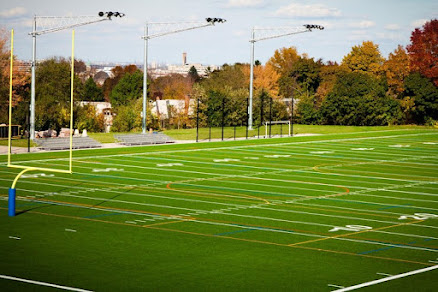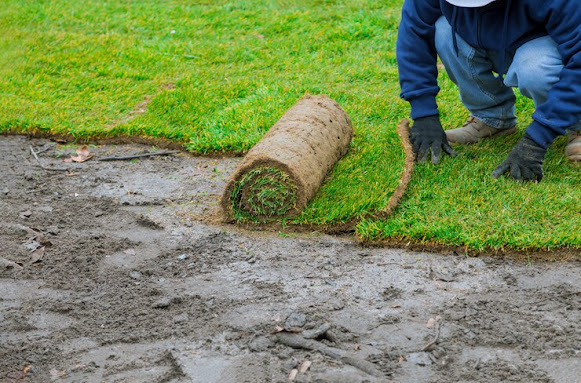How Landscape Fabric Helps with Weed Control
How Landscape Fabric Helps with Weed Control is by blocking sunlight and limiting weed growth. Weeds cannot thrive without light, so the fabric creates a barrier. At the same time, water and nutrients can still pass through to plants. This reduces the need for constant weeding and herbicides. It also prevents aggressive weeds from overtaking flower beds. Overall, it makes gardening easier and more efficient.
In this blog, we’ll explore how landscape fabric helps with weed control, whether it’s the right option for your garden, and how to use it properly for long-lasting results.
What Is Landscape Fabric?
Landscape fabric, also called weed barrier fabric or garden fabric, is a material placed directly on soil to block weeds from growing. It’s typically made from woven or non-woven polypropylene or polyester. The fabric allows water, nutrients, and air to penetrate while suppressing unwanted plant growth.
This makes it especially popular for:
Flower beds
Vegetable gardens
Pathways and walkways
Around trees and shrubs
With proper installation, landscape fabric creates a protective layer that discourages weeds while still supporting healthy soil and plant development.
Weed Prevention with Landscape Fabric
How to Use Landscape Fabric effectively is a question many gardeners and homeowners ask when they struggle with persistent weeds. Choosing the right approach can save you time, money, and frustration while keeping your outdoor space looking beautiful. That’s where Lakota Design Group comes in — offering professional insight and solutions to make your garden thrive without the constant hassle of weed growth. By understanding the true weed barrier benefits of landscape fabric, you can make smarter choices for your landscaping projects.
One of the primary reasons people turn to landscape fabric is weed prevention with landscape fabric. Weeds compete with your plants for water, sunlight, and nutrients, and controlling them can feel like a never-ending battle.
By laying down garden fabric, you create a barrier that minimizes the space where weeds can grow. Seeds struggle to germinate when they can’t access the surface, and those that do often die off due to lack of sunlight.
For homeowners seeking professional services in landscape design San Jose, incorporating fabric as part of the installation process is a proven way to reduce maintenance and keep gardens thriving year-round.
Does Landscape Fabric Stop Weeds Completely?
Many people ask, “Does landscape fabric stop weeds?” The short answer is it significantly reduces them, but it may not eliminate them 100%.
Here’s why:
Weeds can sometimes grow in the soil or mulch layer placed on top of the fabric.
Over time, fabric can shift or tear if not installed properly.
Seeds carried by wind may sprout above the barrier.
Despite these factors, using garden fabric for weed control is still highly effective. When combined with mulch and regular maintenance, it provides one of the best long-term strategies for minimizing unwanted growth.
Using Garden Fabric for Weed Control
When using garden fabric for weed control, the installation process is just as important as the product itself. If it’s done hastily, weeds will find ways to push through. But with careful preparation, you can create a strong and lasting weed barrier.
Step-by-Step Process:
Prepare the Soil – Remove existing weeds, rocks, and debris. Smooth the surface.
Cut the Fabric – Lay it out evenly and cut to fit the desired area.
Secure the Edges – Use landscape staples or pins to hold the fabric firmly in place.
Cut Planting Holes – Make small slits where you want to place flowers, shrubs, or vegetables.
Cover with Mulch – Add a 2–3 inch layer of mulch or decorative stone for extra protection and aesthetic appeal.
Following these steps ensures you get maximum weed barrier benefits of landscape fabric.
Weed Barrier Benefits of Landscape Fabric
The advantages go beyond just stopping weeds. Here are some of the top benefits:
Reduces Maintenance – Less time spent pulling weeds means more time enjoying your garden.
Soil Protection – Helps prevent soil erosion, especially on slopes or in areas with heavy rain.
Moisture Retention – Conserves water by slowing evaporation, keeping your soil healthier.
Professional Appearance – Creates a neat, uniform look in landscaped areas.
In projects managed by Lakota Design Group, these benefits are emphasized to provide long-term beauty and functionality in gardens and outdoor spaces. Whether you’re designing pathways, garden beds, or entire landscapes, fabric helps achieve a polished result.
Common Mistakes to Avoid
Even with its many benefits, landscape fabric can fail if used incorrectly. Here are mistakes you should avoid:
Skipping Soil Preparation – Weeds left under the fabric can regrow and puncture it.
Not Overlapping Fabric – Gaps between sheets allow weeds to sneak through.
Using Cheap Fabric – Thin or poor-quality fabric breaks down quickly.
No Mulch Layer – Exposed fabric can deteriorate under direct sunlight.
Professional landscaping teams, like Lakota Design Group, ensure these errors are avoided by following best practices during installation.
Landscape Design San Jose: Professional Integration
Incorporating fabric isn’t just about laying it down — it’s about how it fits into the overall landscape plan. When you’re working with experts in landscape design San Jose, they know exactly where fabric will add the most value.
For example:
Around ornamental beds where weeds are common
Under pathways or stone patios
Around fruit trees or vegetable gardens to reduce competition
By integrating fabric into your design, you’re not just preventing weeds; you’re enhancing the entire health and appearance of your outdoor environment.
Final Thoughts
Landscape fabric is one of the most effective tools for maintaining a healthy, weed-free garden. It reduces maintenance, protects soil, and helps conserve water, all while creating a professional look. Whether you’re a DIY gardener or working with professionals like Lakota Design Group, knowing how to install and maintain fabric properly will ensure the best results.
If you’re ready to enjoy the weed barrier benefits of landscape fabric in your own yard, don’t wait — contact us today to discuss your landscaping needs and discover how the right solutions can transform your outdoor space.
FAQs
Q1: How long does landscape fabric last?
High-quality landscape fabric can last 5–10 years, depending on exposure to sunlight, soil conditions, and maintenance practices.
Q2: Can I plant flowers or vegetables directly in landscape fabric?
Yes! Simply cut small slits in the fabric for planting. The fabric allows water and nutrients to pass through while still preventing weeds.
Q3: Is landscape fabric environmentally friendly?
When used correctly, landscape fabric reduces the need for chemical herbicides. However, choosing biodegradable or eco-friendly options is best for sustainable gardening.


Comments
Post a Comment